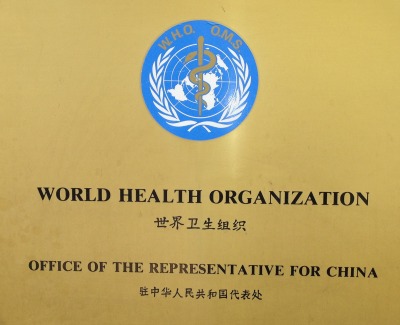Email from Guangdong
In the afternoon of Monday, February 10, 2003, just after the Chinese New Year weeklong holiday, Schnur received an email from the son of a former WHO staff member who was studying in the southern city of Guangzhou in Guangdong province. Schnur was catching up on backlogged work and put off the email until he wrapped up for the day. The email asked:
Am wondering if you would have information on the strange contagious disease (similar to pneumonia with invalidating effect on lung) which has already left more than 100 people dead in … Guangdong Province, in the space of 1 week. The outbreak is not allowed to be made known to the public via the media…[but] there is a ‘panic’ attitude. [6]
The prospect of an influenza epidemic that could start in China and spread quickly had long been a worrying scenario for international public health officials. In Chinese provincial animal markets, civet cats, snakes, turtles, badgers, hedgehogs, frogs and others were for sale as delicacies. Disease experts had seen animal viruses jump the divide to humans, and in most cases it stemmed from close and unhygienic contact between animals and people. For example, market chickens were often kept in close proximity to ducks; if duck droppings fell on chickens, that could allow the H5N1 virus to jump from ducks (which do not become sick from the virus) to chickens (which do).
The international public health community considered China ill-prepared for such an epidemic. The country’s public health system was highly decentralized, with irregular reporting and no central repository of current health data. Health matters were largely the responsibility of the provinces, with guidelines from the center. With the economic changes in China, central control had declined even further, particularly in the wealthier eastern provinces. “There’s very little money flowing from the central government to the provinces,” explains Bekedam. “That means the government has very little influence on operations in the provinces.” [7] Moreover, public health had gone underfunded for years, as the government focused on other issues. Many rural areas lacked sufficient medical supplies or even basic laboratory equipment.
Nonetheless, the email did not alarm Schnur unduly. For one thing, WHO had been alert to the possibility of a renewed outbreak of H5N1 avian flu since the 1997 Hong Kong occurrence, which killed six people (of 18 infected) and occasioned the slaughter of millions of chickens to prevent its further spread. It was possible that this was bird flu, he thought. In fact, just three months earlier, in November 2002, an official at WHO-Geneva had heard rumors of avian flu in southern China, and the Beijing office had queried the MoH. The response had been “this is just ordinary flu, no problem,” recalls Schnur. [8] Even ordinary flu killed many people each year, particularly the elderly. As Bekedam points out: “Having many people die of flu in the flu season, you don’t [notice] it so quickly.”
Moreover, Schnur knew of cases where the chronically underfunded provincial Chinese health authorities had issued medically doubtful health alerts in order to create a market for vaccines—a moneymaker for their budgets. It was plausible that the report was based on such an alert. Nonetheless, before he left for the night he paraphrased the email and sent a query to his counterpart in the Ministry of Health, the deputy director general for communicable diseases. Schnur and the deputy had previously worked for months on creating a national system for influenza surveillance. [9] Schnur also forwarded the email to Dr. Hitoshi Oshitani, the regional advisor for communicable diseases at the WHO office in Manila.
The next morning, Schnur asked several of the Chinese staff in the office to scan southern China or domestic health websites to see if there was anything that might confirm or invalidate the email report. To his surprise, they found a great deal: mention of multiple illnesses and deaths in Guangdong, plus the disappearance of white vinegar from store shelves. This was telling, because many Chinese believed that boiling vinegar and putting it on door and window frames kept infection at bay.

Meanwhile, Bekedam had another source in Guangdong. The Dutch ambassador called him on Tuesday, February 11, with a question from the new coach for the Chinese football team, who happened to be Dutch. Coach Arie Haan was getting ready to play a match against world champion Brazil in Guangzhou on February 12. Haan reported to the ambassador that “people are dying in Guangdong,” and asked if it was safe to be there. Bekedam, who knew nothing about it, said he could not advise. He and Schnur both presumed the match would be canceled if there were a public health issue. “I’m thinking if you have a really serious problem, you don’t bring 60,000 people together into a football stadium,” says Schnur.
[6] World Health Organization, SARS: How a Global Epidemic was Stopped . (Manila: WHO Western Pacific Region Publications), 2006. p.75.
[7] Author’s interviews with Dr. Henk Bekedam on October 30 and 31, 2012, in Beijing. All further quotes from Bekedam, unless otherwise attributed, are from these interviews.
[8] Author’s telephone interview with Alan Schnur on November 15, 2012. All further quotes from Schnur, unless otherwise attributed, are from this interview.
[9] At one time, the US Centers for Disease Control (CDC) had contracts with eight provinces to send it flu virus samples for possible use in vaccines; the Japanese National Institute for Infectious Diseases also had contracts with eight provinces. WHO was working with the China MOH, CDC and NIID to create a comprehensive system.
